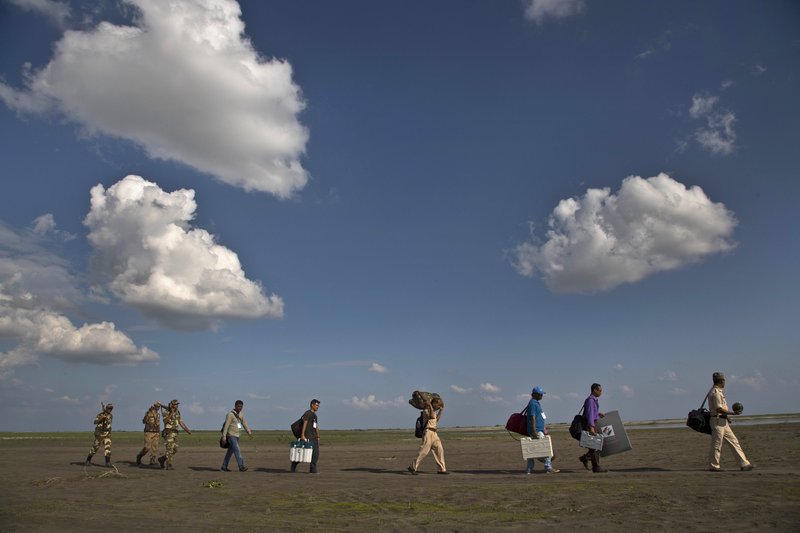NEW DELHI -- The figures involved in India's general election are staggering: 900 million voters, 83 million first-time voters, 11 million poll workers, nearly 4 million electronic voting machines, 1 million polling booths and 570 special trains for migrant laborers and security personnel.
Such numbers convey the scale of the world's biggest democratic exercise. But it's smaller numbers that show India's commitment to reach every voter, no matter how remote.
In India's six-week marathon election that began last week, the Election Commission has ruled that no voter should have to travel more than about a mile, from home to cast a ballot, whether voters live on a Himalayan peak or an island in the Bay of Bengal.
The polling booth in Gir Forest National Park in Gujarat is set up for the sole human inhabitant, a Hindu priest who lives among the lions. Polling officials hike for a whole day to reach the remote village of Malogam in Arunachal Pradesh, where just one woman is registered to vote.
Poll workers must be in superb physical condition to cross mountains, rivers, deserts, forests and national parks. The work entails arduous journeys by train, road, helicopter and boat, accompanied by porters who carry the briefcase-size voting machines, registers, ink and other election paraphernalia on their backs.
In Arunachal Pradesh, a state in India's northeast that borders Bhutan, China and Myanmar and where voting took place Thursday, most polling stations are inside dense, Himalayan forest.
Poll workers set off a week before the vote. The first leg of the journey was a three-hour drive from Changlang, a district in the east, to the city of Maio, a tourist destination 62 miles away.
From Maio, the next stop was Vijoynagar, some 101 miles away, through Namdapha National Park. No road connects the two towns, and the terrain is subject to frequent flash floods and landslides. Journeys are measured in days rather than hours.
So, the team reached Vijoynagar by Indian air force helicopter. In pre-monsoon time, bad weather can force the pilot to abort several attempts. That's why a week's leeway is given to the team. If all else fails, it's six days to reach Vijoynagar by foot.
From Vijoynagar, the caravan walked the final leg of the odyssey to the polling station of Gandhigram. It is only 7½ miles from Vijoynagar, but the trek takes eight hours, through eerily dark jungles where no sunlight steals through the canopy and under constant threat of an ambush by elephants.
"These are not Alpine tracks. These are subtropical forests with thick undergrowth. There is no stated rule, but we prefer people under 45 because a lot of stamina and energy are required," said Kaling Tayeng, the chief electoral officer of Arunachal Pradesh.
The marathon expedition to Gandhigram was all for 242 voters.
In the Ladakh region of Indian-controlled Kashmir in the north, a polling station at an altitude of 14,196 feet is being set up for only 12 voters.
At the other extreme of the country from the mountain peaks of Ladakh are the low-lying Andaman and Nicobar Islands where voting machines were transported by various seafaring vessels for Thursday's vote.
The polling station at Pilopatia, just 32 feet above sea level, is famous for the trouble it presents election officials.
Officials start off on a 24-hour journey by ship from Port Blair, then by speedboat, then by small dinghy and finally by a "hodi," or traditional boat used by the local tribe, said Dr. Monica Priyadarshini, a Nicobar district election officer.
"In places, the waters are infested with crocodiles and sea snakes," Priyadarshini said.
The voting machines were protected inside waterproof boxes and other polling material was kept dry under layers of plastic cover. The journey ended with a splash: Priyadarshini and the team clambered out and waded through waist-high water to reach the shore. All this for just nine voters.
A Section on 04/14/2019
